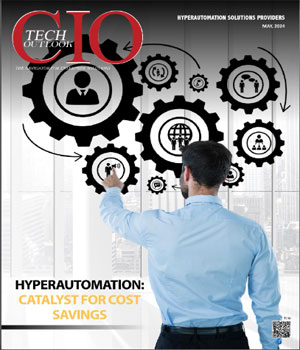CIOTechOutlook >> Magazine >> July - 2016 issue
IAM and BYOD – Where do you draw the line?
By
 Today, to aid in increasing ROI, many enterprise contemplate the adoption of BYOD principles to aid employees to be flexibly connected to office networks. Many enterprises have already embraced the BYOD bandwagon. Studies have shown that BYOD is a very cost effective tool when compared to the office bearing the brunt of multiple devices and also handling the maintenance and upgrade costs of the devices. This consumerization of IT as predicted by Gartner is already the future of office work methodologies.
Today, to aid in increasing ROI, many enterprise contemplate the adoption of BYOD principles to aid employees to be flexibly connected to office networks. Many enterprises have already embraced the BYOD bandwagon. Studies have shown that BYOD is a very cost effective tool when compared to the office bearing the brunt of multiple devices and also handling the maintenance and upgrade costs of the devices. This consumerization of IT as predicted by Gartner is already the future of office work methodologies. However BYOD comes with its own unique challenges when compared to how much of a strain it places on the IAM deployments of the organization. This is due to the thousands of devices owned by employees that try to gain access to the main frame of the enterprise. How can the flow of data be controlled? Monitored? How can it be organized in a systematic manner so as to avoid hassles and security breaches? Although managing access over corporate owned devices is easy as system administrator has installed various programs which allow or restrict access to various components, the issues arises when enterprises allow cloud based applications to be used by managers. This makes it a hard task for the IT team to design a centralized IAM solution that incorporates both corporate and cloud necessities.
The biggest issue arises when the enterprises force certain rules and regulations on existent BYOD devices which may not go down too well with the device or worse still, the employee. Enterprises are required to design programs spanning around ios android and multiple device platforms. Also taking into consideration GRC as well as security issues is going to be on the topmost agenda for current CIOs. The onus lies on the IT team to authenticate devices as soon as they are plugged into the main frame. The data also needs to be encrypted correctly so as to avoid data leakage whereas it does not become too complex for the common employee to access his own device due to multiple restrictions.
In lieu of the latest challenges faced by CIOs in identity crisis we have put together this month’s special edition on The 20 most promising IAM solution providers. Armed with the latest advancements in big data and security technologies, we are sure that these companies can answer your problems to security issues faced in your boardrooms.
Vignesh Anantharaj
Managing Editor
vignesh@cioreviewindia.com
CXO Insights
Digital Trasformation: Why It Isn't Adding Up...
By Shantanu Chakraborthy, Director of Marketing & Client Engagement, Concentrix
Digital Diversity - Convergence of Minds and...
By Kewyn George, Director - Business Performance, AstraZeneca
Strategies to Enhance Operational Activities &...




